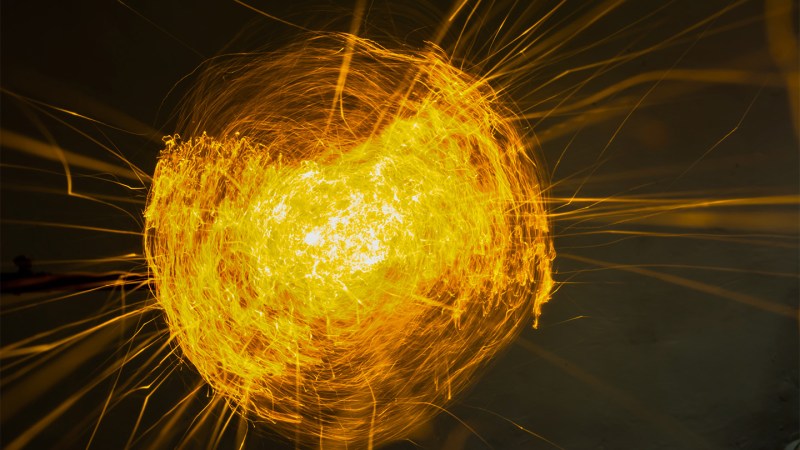
Take our AI survey
Scientific news has partnered with Trusting News to gather feedback on the potential use of AI in journalism. Currently, we do not publish any content produced by generative AI (see our policy). We want to hear your views on how Scientific news can use AI responsibly. Tell us by taking a short 10-question survey.
In recent years, science fiction writers have seized on the mystique of the kugelblitz and chased after it. Fans of the Netflix show Umbrella Academy may be familiar with the term, which is German for “ball lightning”. In season 3, a kugelblitz wipes out large swaths of existence.
In general relativity, gravity results from the curvature of matter in spacetime. If enough mass is packed into a region, spacetime can bend so dramatically that it forms a region within which it is impossible to escape – a black hole. But in general relativity, energy and mass are equivalent. This means that energy can bend space-time just as matter can, suggesting the wild idea that a black hole can form without matter at all.
This concept is “a very interesting thought,” says theoretical physicist Juan García-Bellido of the Universidad Autónoma de Madrid, who was not involved in the new study, “especially if we want to produce something like this in the laboratory.” Scientists have previously looked into whether futuristic lasers could one day form a black hole in a lab, and have even proposed using a kugelblitz to power a spacecraft.
Alas, the calculations suggest that any attempt at a kugelblitz would result in failure, says Martín-Martínez. “You won’t even come close. You won’t even get something that starts to appeal to you like Earth.”
This is due to a quantum effect that occurs when electromagnetic energy is highly concentrated. According to the well-proven theory of quantum electrodynamics, when light reaches those extremes, pairs of particles and antiparticles begin to form. Those particles—electrons and their positively charged antimatter partners, positrons—will flee the region, taking energy with them. This prevents the energy from reaching the levels needed to form a black hole.
Forming a kugelblitz in a laboratory would require light intensities greater than 1050 times more than the latest laser pulses, the team calculated. (That’s an extremely large factor—a 1 with 50 zeros behind it.) And in nature, the brightest quasars—the bright glowing centers of active galaxies—are also very dim.
The kibosh on kugelblitzes applies to a wide range of scales. It excludes kugelblitzes with a radius as small as one hundredth of a quintillionth of a nanometer to 100 millionths of a meter. Even outside that range, says Martín-Martínez, a kugelblitz would still be highly unlikely.
García-Bellido, however, notes a possible loophole: “It’s much more likely that things like this happened in the early universe.”
Just after the Big Bang, the universe is thought to have expanded extremely rapidly, a process known as inflation. This inflation may have introduced fluctuations in the curvature of spacetime that could cause light to collapse into what is known as a primordial black hole (SN: 8/7/16). So while light won’t form black holes under its own gravity, that preexisting curvature, García-Bellido says, could have allowed for something akin to a kugelblitz.
#black #hole #pure #light #impossible #quantum #physics
Image Source : www.sciencenews.org

